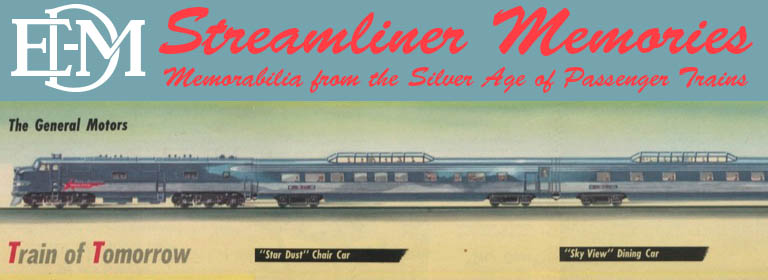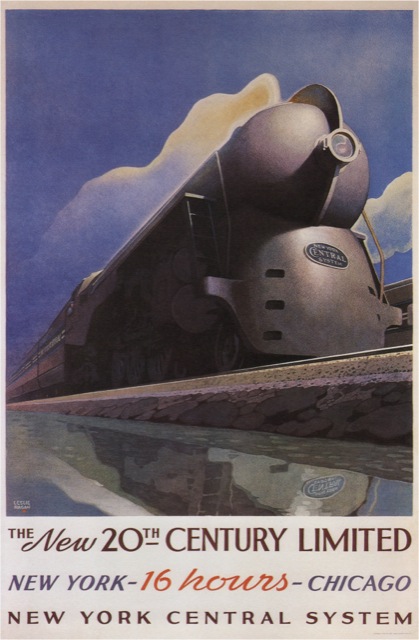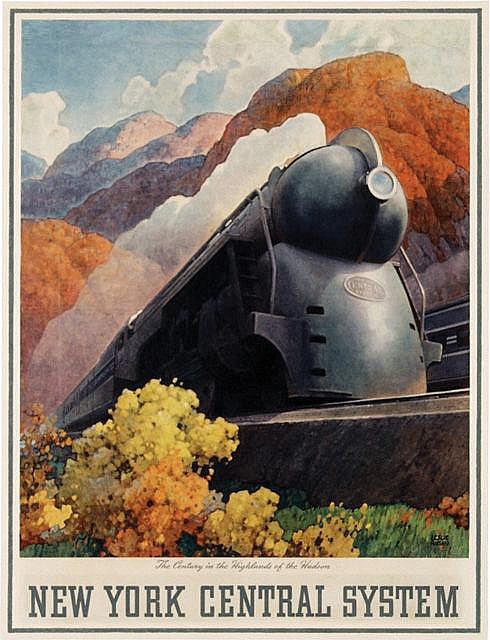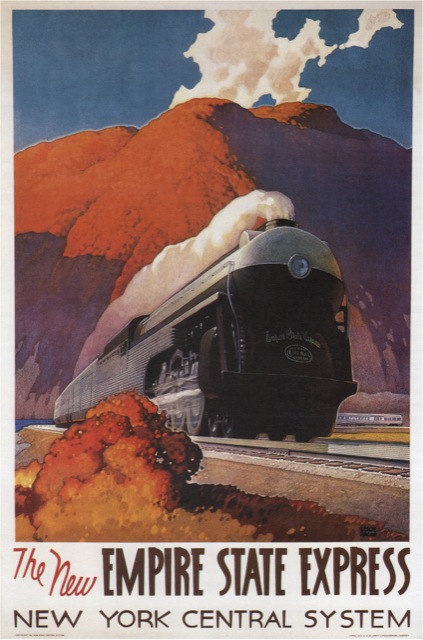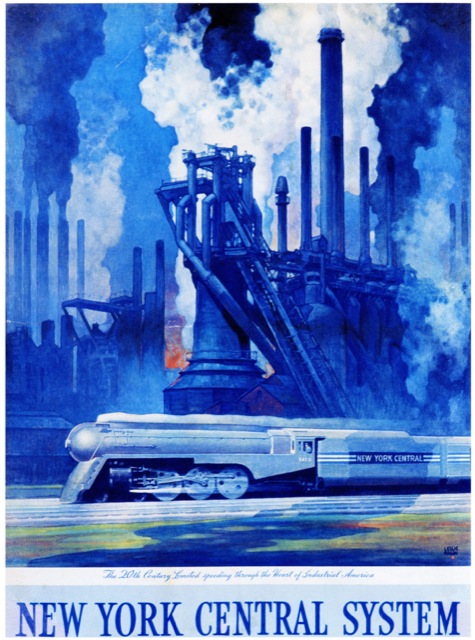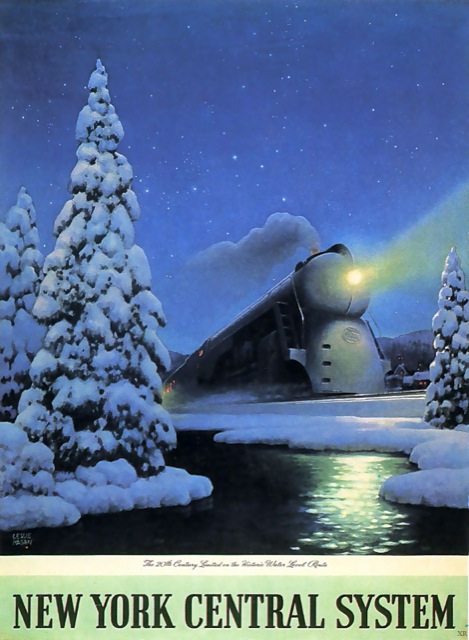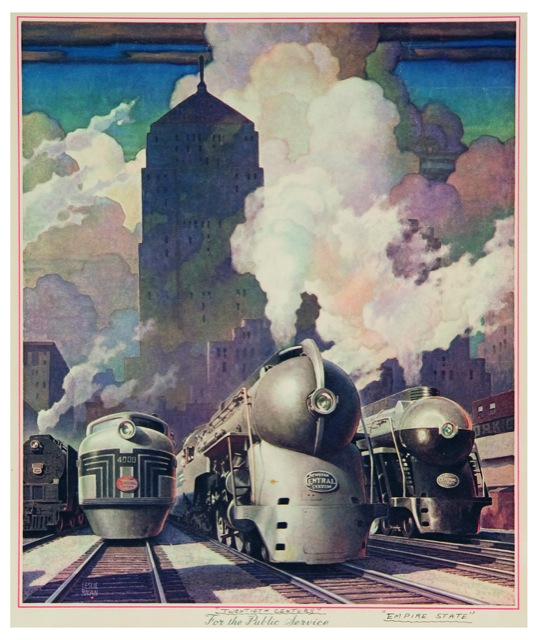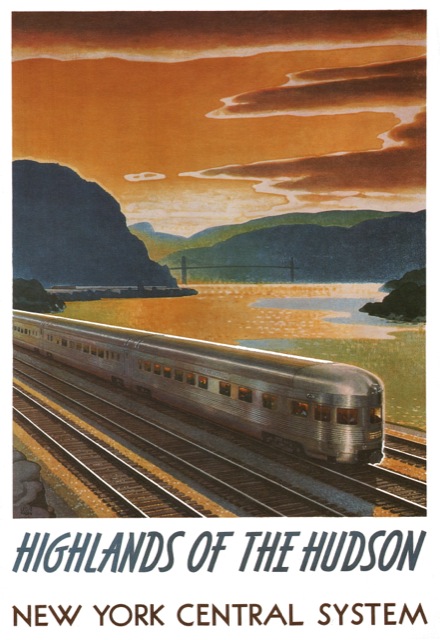Ragan painted few trains (other than a few background images in his landscapes) for the New York Central before 1939. But his first famous painting, the iconic image of the streamlined Twentieth-Century Limited locomotive designed by Henry Dreyfus, also became his most-famous painting.
Click image to view a 1.0-MB, 2,398×3,659 JPG.
Ragan and, presumably, the New York Central liked this image so well that he repeated it, again and again, in posters and calendars over the next decade. First was the 1938 (or possibly 1939) calendar that used the same locomotive but with an autumn background.
No larger image available.
In 1941, Ragan painted the Empire State Express; a slightly different locomotive and train, to be sure, but in exactly the same perspective. Lucius Beebe called this perspective the “three-quarter view” of locomotives.
Click image to view a 1.1-MB, 2,420×3,657 JPG.
For the 1942 calendar, Ragan painted the Century‘s locomotive from a completely different perspective. However, the lack of detail gives the impression that Ragan really didn’t put a lot of effort into the picture.
Click image to view a 0.8-MB, 1,486×2,000 JPG.
In 1943, at the height of World War II, the New York Central issued this morale-boosting poster. The locomotive is unstreamlined (streamlining being considered an unnecessary luxury during the war) but the perspective is the same.
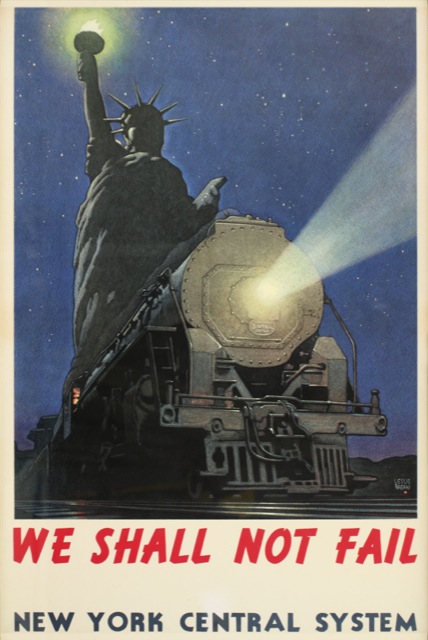
Click image to view a 0.5-MB, 1,486×2,000 JPG.
With victory in sight, the 1945 calendar has exactly the same locomotive as the 1938 poster but set in a winter landscape.
Click image to view a 0.3-MB, 1,178×1,600 JPG.
The 1946 calendar features several locomotives–three of which were in some of the above posters–at Chicago’s LaSalle Street Station. At least they are not all in three-quarter perspective.
Click image to see a larger view.
In 1947, Ragan finally shows that he can paint the opposite end of a train from the locomotive and from another perspective as well.
Click image to download a 1.1-MB, 2,463×3,578 JPG.
The authors of Travel by Train say that Ragan set the streamlined trains “in surreal landscapes, bathing their reflective surfaces in shimmering natural light, creating dream-like poster icons.” That may be, but Ragan’s habit of working from photos not only led to the repetition shown here but soon made his posters seem dull and dated.
After the war, Ragan moved to the island of Majorca in the Mediterranean Sea, where he no doubt enjoyed hundreds of surreal sunsets like the ones he featured in his paintings. However, this also meant that he probably never saw any of the dozens of trains he painted for the Budd Company. Late in life, Ragan apparently moved to Seaside, Oregon, and died in a Portland hospital in November, 1972, just a few days short of his 75th birthday. Despite the reverence railfans feel for him today, I couldn’t find any obituary for him in Trains magazine, and the Portland Oregonian had nothing more than a funeral notice.
